There are certain things that are the same for all houses/flats/palazzi when you move in and today I thought I would share some of those ideas to get you started if you have a new project involving either the whole building or just one room. It’s about getting the foundations right so the rest will follow on naturally if you like.
It’s not claiming to be a definitive list but it includes some basic thoughts that should give you a starting point for any work you are planning on doing. These are the questions I get asked about all the time so I thought you might find it helpful.
FLOORS
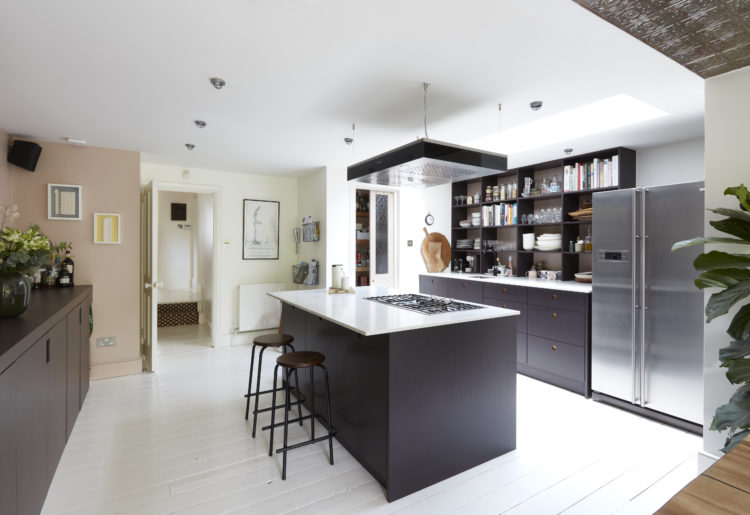
Floorboards seems to be the thing I am most often asked about. You can have underfloor heating with suspended boards but it’s more complicated to fit which means more expensive. These days I’m entirely happy with fitting a good-looking radiator and painting it in a strong colour or matching it to the wall.
If you want to paint your floorboards then they will need sanding first. And if you have peeked under a corner of carpet and done a happy dance because you saw some boards, then don’t assume it’s a complete room. I have lost count of the number of rooms where I have lifted the full carpet on the basis of what I saw in a corner to find either concrete from where there was a wall years ago, or a fireplace, or just a slab of chipboard where the boards had gone rotten and been replaced with cheap board and a carpet. You can buy replacement boards in small amounts on eBay though so don’t despair if that is what you do discover.
When painting my own boards I have used Farrow and Ball because it matched the walls. It’s water-based which means it dries quickly – useful for when cats are trying to walk over it – but it’s not as tough as say Ronseal. But then you don’t get the choice of colour. Little Greene have oil-based floor paints which will take longer to dry but will be more hardwearing.
If you are re-laying the whole floor then you can either buy reclaimed boards or go for engineered ones – which are compatible with underfloor heating by the way.
When it comes to rugs buy the biggest you can afford and make sure it sits under at least the front legs of the furniture. This will help zone an open-plan space and make the room look bigger. A small rug floating in the middle of the floor with the furniture all sitting respectfully two feet back from it will look messy and small. It gives the eyes too much to look at and draws attention to the size of the space and the relative size of the rug.
Carpet is still the biggest selling floor covering in the UK. Wool is naturally flame retardant, a natural fibre and warm to walk on. It also insulates against noise so some leasehold flats insist on it above ground floor level. There’s no doubt that a carpet/rug can be cosier in the bedroom than floorboards but it’s a question of personal taste – and money.
Having boards and rugs means preparing the boards and buying the rug – that’s two things to pay for. Laying a carpet is often quicker, easier and cheaper and warmer.
WALLS
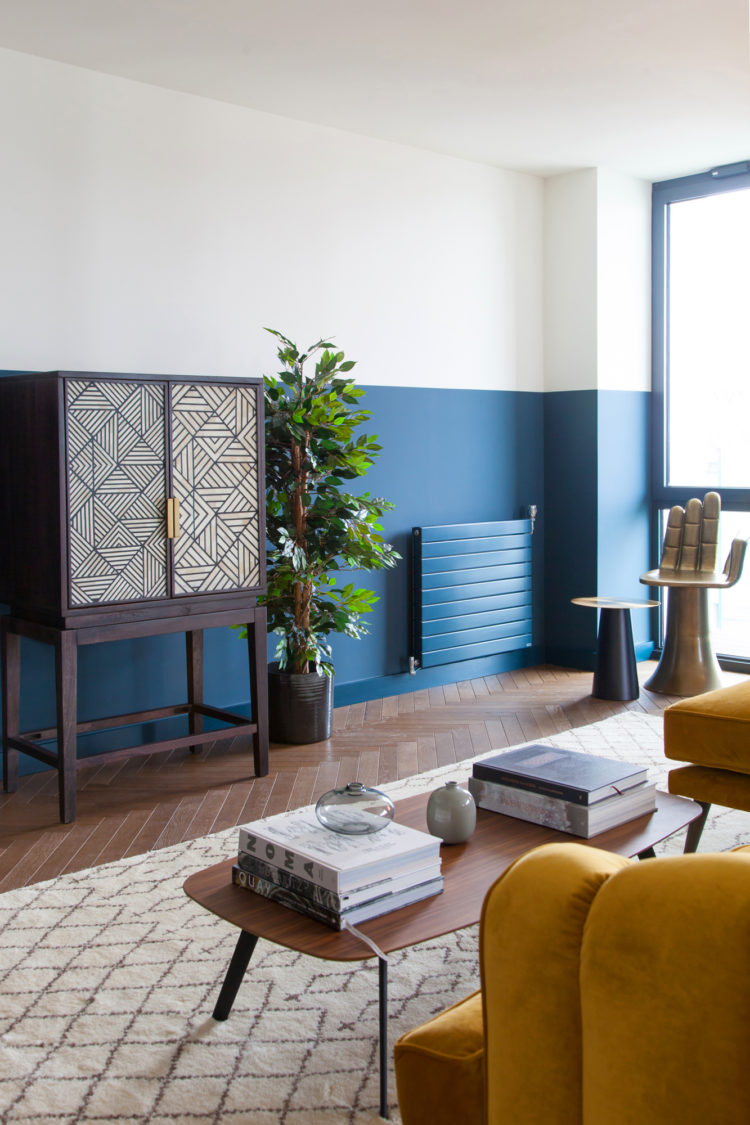
When moving into a new house it’s tempting to start poring over paint charts and deciding on colours straight away, but the fact is that paint is the cheapest element and the easiest to change. Very often you already have a bed or a sofa or something that is going to dictate the direction of the room and is something you won’t be planning on replacing too often. By all means use colour charts to help you decide what colour you would like your new sofa to be but I would advise buying that before you paint the walls.
Having decided on a wall colour don’t assume you have to do all four walls the same. We have spoken at length about feature walls and when they do and don’t work. To recap – if you have a wall with unusual architectural features – one that goes up under eaves for example – you can highlight that in a different colour. Otherwise think about doing all four the same but not all the way up if you are nervous of it being too much.

Or you can do one wall behind the bed and the ceiling to create the illusion of a giant four poster. Or you can paint a giant triangle across a corner to delineate a work space or a seating area.
Have fun with your paint and, like the ceiling, which I have written about below, don’t just leave the woodwork white because you thought you should. Match it to the walls wherever possible. Or make a decision and contrast it with the walls. Pink walls and dark grey woodwork, pale chalky white walls and green woodwork to match the cushions.
Don’t assume that woodwork has to be white. It doesn’t.
CEILINGS
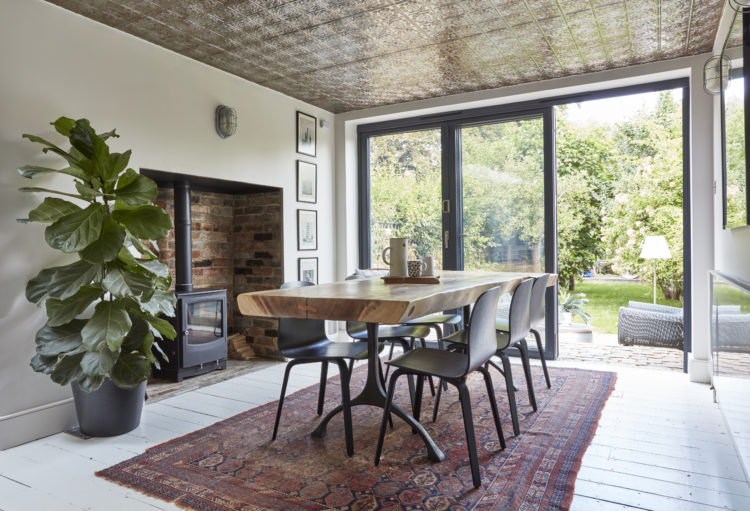
Often called the fifth wall, don’t assume you have to paint this white either. White is often the default colour for ceilings and woodwork but it doesn’t have to be that way. If you have a small dark room that you have chosen to paint dark then carry on up and over the ceiling. This works well in a television room or one you are using mostly in the evening. The same principle apples to light colours – keep the same one from the skirting boards up the walls and over the ceiling. This is a very calming look as it doesn’t distract the eye by drawing attention to all the corners and edges. It’s great if you are using any of the pale greys, blues or greens.
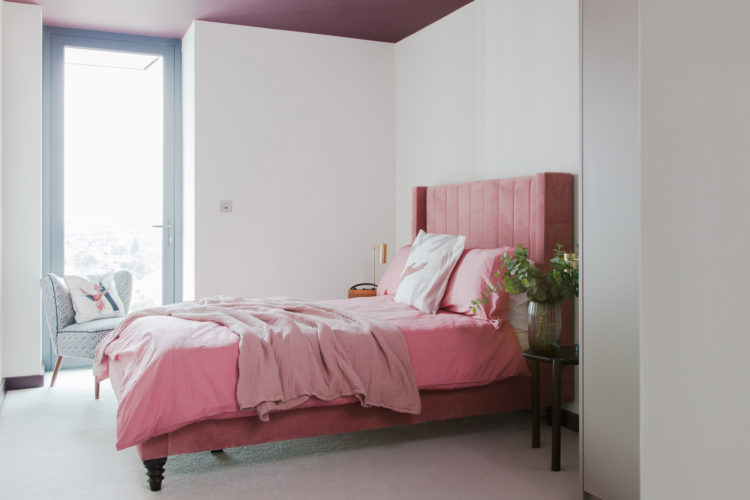
Or there’s the third way; paint up to the picture rail – if you have one – in the dark colour and use a light colour for the tops of the walls and the ceiling. That will also make the ceiling look higher. Again it doesn’t have to be white. In a recent styling job for DFS Sophie Robinson painted her walls blue and her ceiling pink. I painted the bedroom ceiling and all the woodwork burgundy in a show flat and, of course, I installed a tin ceiling in my kitchen as it was too low for pendant lights but I wanted to make some sort of feature to stop it from being just a white box extension.
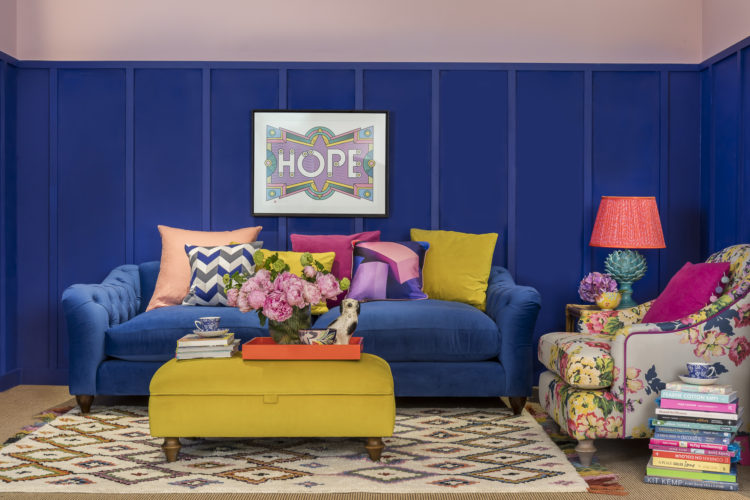
In short – don’t leave them white because you thought they ought to be. You made a decision about what colour to paint the walls – do the same for the ceiling.
WINDOWS and DOORS
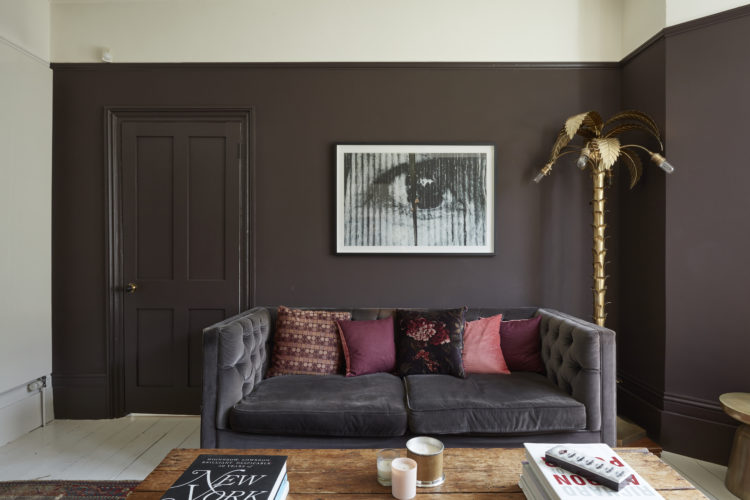
There’s no doubt that curtains have fallen a little out of fashion as we look more to our Scandinavian neighbours with their clean lines and clutter free homes. If you do want curtains then they must be floor length. That’s a rule. There aren’t many and that is one of them. Bear in mind that if you have bay windows, you need to be able to pull them right back at the sides if you don’t want to lose half the light coming into the room. Those curtain poles can be expensive and can mean that the pulled back curtain takes up the space that you had earmarked for a little table or chair.
Blinds take up less space and block less light so they can be a great solution but it’s definitely a less luxurious look. Having said that you can have Roman blinds made in linen with black out linings as well as pull up blinds, which fix to the bottom of the window and you pull up to the height you require. This is great for flats and houses on busy streets where you want privacy from people walking past but don’t want to lose any light. You can have a functional blind that does this on the bottom half of the window and a more decorative one that pulls all the way down from the top for night time.
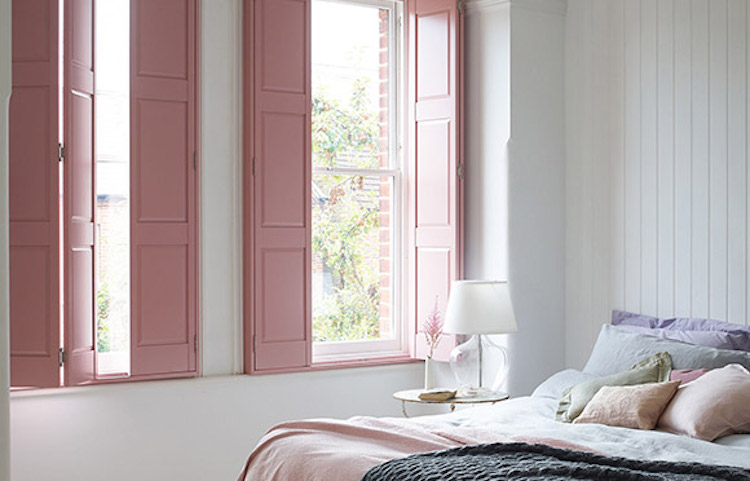
Shutters. Now I’ve never been hugely into the plantation variety I’ll admit but, again as my client pointed out yesterday, if you live in a ground floor flat and your bedroom is at the front, this does mean you can sleep with the window open and the shutters closed, which is a bit of a necessity at the moment.
A word on doors. If you have low ceilings and are doing any sort of building work then do consider raising the height of your doors. It will make the whole room feel taller as you go into it. In a house with a window over the door consider removing the window and taking the door up to the full height. It’s a little visual trick that really adds to the sense of space.
LAYOUT
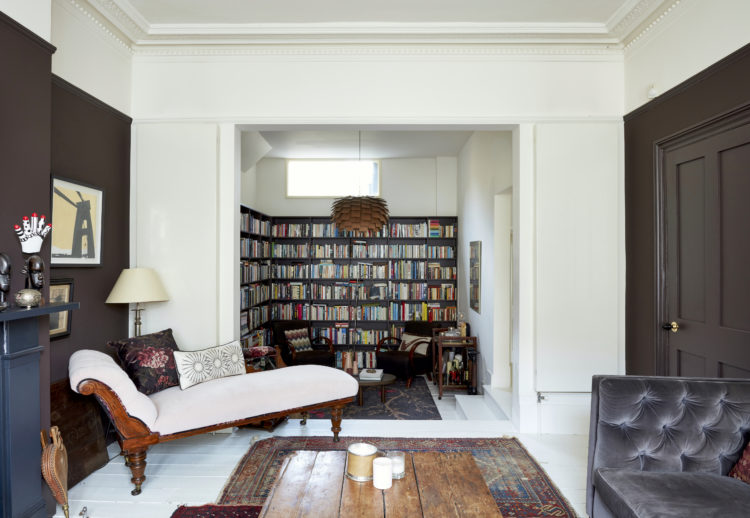
It’s a common misconception that pushing all the furniture to the edge of the room will make that room feel larger. It won’t. It will just look like you pushed all the furniture to the edge to make the room feel larger. Also it can make it feel like you are all sitting around waiting for something to happen in the middle.
Now, sometimes there isn’t a choice. I live in a tall thin Victorian terrace – if the sofa doesn’t go with its back to the wall then my feet will be in the fireplace. But the sitting room is longer than it is narrow so I have positioned the chaise longue across one end to zone the two spaces and create a sort of square conversational area.
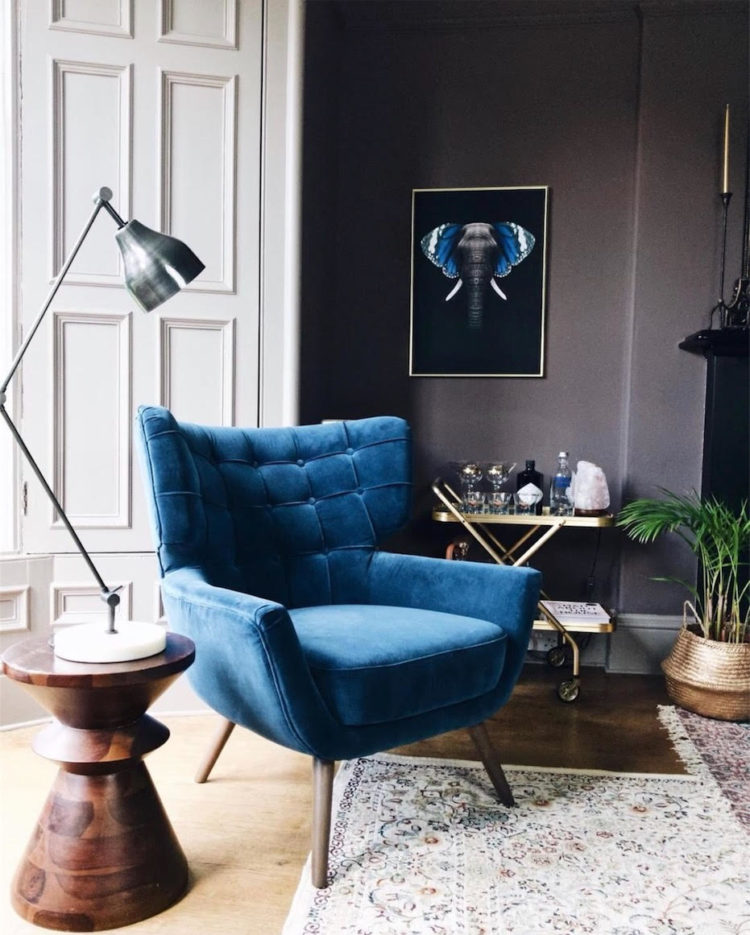
If you can pull the furniture an inch or so away from the wall, so that it “floats” that will help. And do think about a coffee table in the middle so you’re not all sitting in a circle staring at each other. That’s a bit AA. It doesn’t have to be a big table – you could have a group of three small round ones for example that, if needed in different places at different times can be pulled closer to a particular chair or sofa.
And don’t underestimate the visual punch of a bit of empty space. Whether it’s a corner with nothing in it or perhaps a small table with nothing on it except a plant. That’s a signal that you didn’t have to use every precious inch of space because you had room to just have a vase of flowers. It’s not a useful cupboard, or a bookshelf or something practical and space-saving. It’s just a thing. Because you could. You might need to put the storage elsewhere but just in that space it will look like you had, for what of a better word, spare space. Which will make the room feel bigger and less cluttered. Which will be, in turn, more calming.
I hope that has been helpful. It might just get you started. And for everything else I wrote a book.





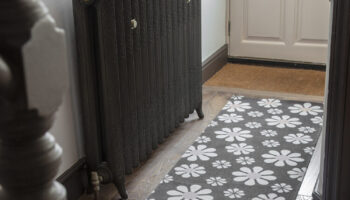
Hi Kate,
Your post is so well timed for me – I have to choose a radiator for my plumber to fit next week and I really like the blue panelled one in the show flat you did. Do you happen to know who makes it please? Also, my plumber advised against painting the rad’s – but I really want to paint them the same colour as the walls (can’t afford the Bisque custom matched, sadly). Can you paint any radiator and what type of primer and paint do you need. I really hope you can reply as am a bit under pressure to choose one by Monday!! Thanks as ever for all the fabulous advice.
Louise
The plumber just wants to be in and out of your place, not delayed by waiting for you to sand, prime, paint two coats of your final colour. He’s talking tosh, but do factor in the time and effort (if it’s a DIY job) or the cost if paying someone to do it.
Take a look at the Zinsser range of primers: they are first rate. Your paint needs to be eggshell, gloss or sprayed (expensive as needs to be done by a car spraying outfit but you’ll get a perfect “factory finish” so if it’s one or two rads in your main room, may well be worth it).
Good luck!
Also forgot to mention: check the depth/projections of your skirting boards, and the projection of the fittings to fix your rad to the wall. I’ve just finished a total refurbishment of my Victorian conversion flat. Every ceiling came down, every floorboard came up. I put period features back in – cornicing (could write a book about my “learnings” – AKA “mistakes”), tall, moulded skirting boards etc. Those beautiful, beautiful skirting boards, though, stick out (the technical term!) a lot more than bog-standard ones. The rads (not Bisque but lovely – and cheaper – nonetheless) came with wall-only fixings. Once the rads’ pipe work was placed clear of the skirting boards, with room to accommodate the columns of the rads, the back of the rads and the fixings didn’t meet. Had a devil of a job to find fixings and they were expensive. Also had to find feet for the rads, as I was worried about the soft, old brick being able to hold them, especially on extended fixings. Make sure that you factor this in when you choose!
Kate, great article. What is the name of the light coloured paint you have used in your living room/library?
It’s wimborne white by Farrow and Ball x
Lakeland paints also do a water based floor paint that I’ve found very good. Plus it’s better for the environment, doesnt fill the house with horrible chemical fumes – and they can match colours by F&B/LG etc.
Oh wow. This was such an amazing post. Thank you for sharing your knowledge and all these tips Kate! There is SO much here – so many gems of wisdom. So many are obvious – but overlooked, like the point about paint being cheap and easy to change – I have been deliberating over this recently and as usual, your posts seem to come at the most serendipitous moments! I need to figure out what I’m doing with my sofa etc. first and go from there.
I’ve been so inspired from reading your posts and I LOVE bright colour but find it hard to settle on just one. I love the idea of doing different walls different colours. It’s not something you EVER see here in Australia. We have a very boring, standard ‘look’ it seems which flows through a lot of the interior mags. I’ve noticed a similar thing with furniture – I re-upholster and refurbish vintage furniture and have been incredibly inspired by some people in the UK who I’ve now established wonderful relationships with.
I don’t know if it’s because we’re so far away – or as I suspect, Europe with its longer, richer and more diverse cultural heritage – is by nature more bold, as the boring stuff has already been done! haha. I’m from the UK originally, now an Australian citizen and have been amazed by how much I didn’t know I didn’t know about interiors.
Thank you for sharing your experience and tips – they’re all invaluable for me and continue to fire me up with enthusiasm.
Internal, solid shutters (like the photograph) are to be recommended where sound proofing at night is needed and where blinds or curtains won’t fit he bill.
We live in Hertfordshire and would recommend the firm we used 4 years ago, who were reasonably priced and perfectionists.
Hope I am allowed to say their name. Shuttercraft-hertfordshire.
Thanks, Kate, for a great post- very helpful. All the rooms look fabulous, but the one with the shutters is just dreamy!